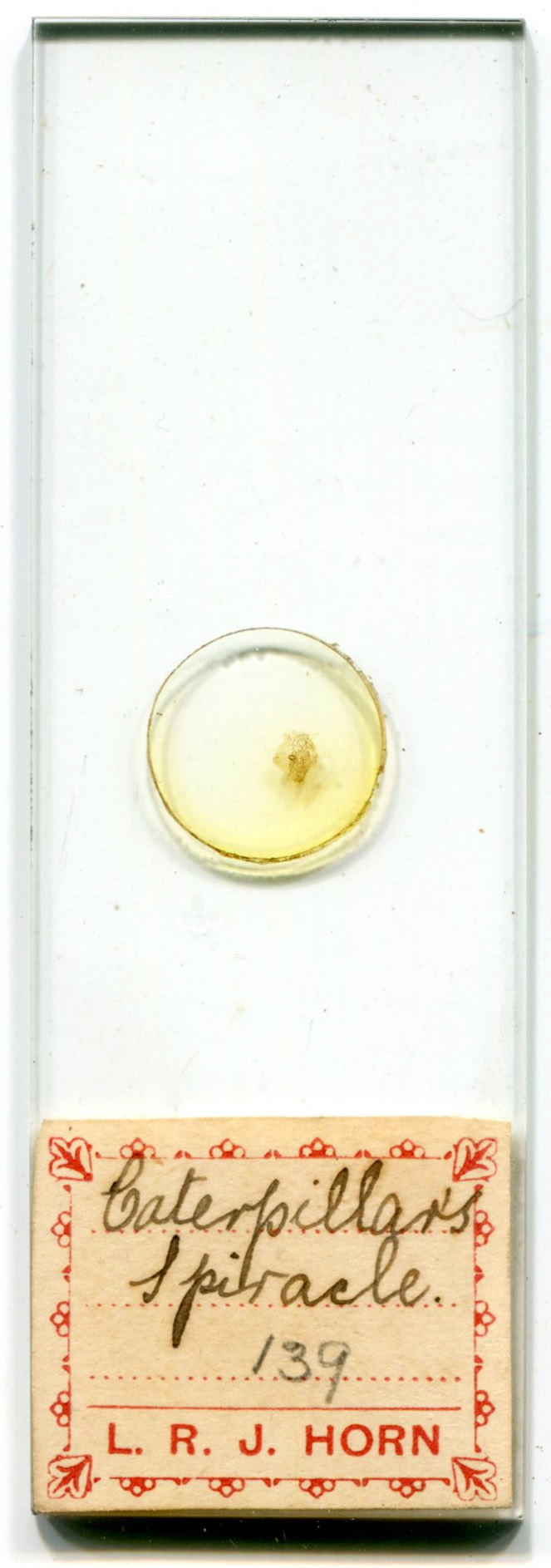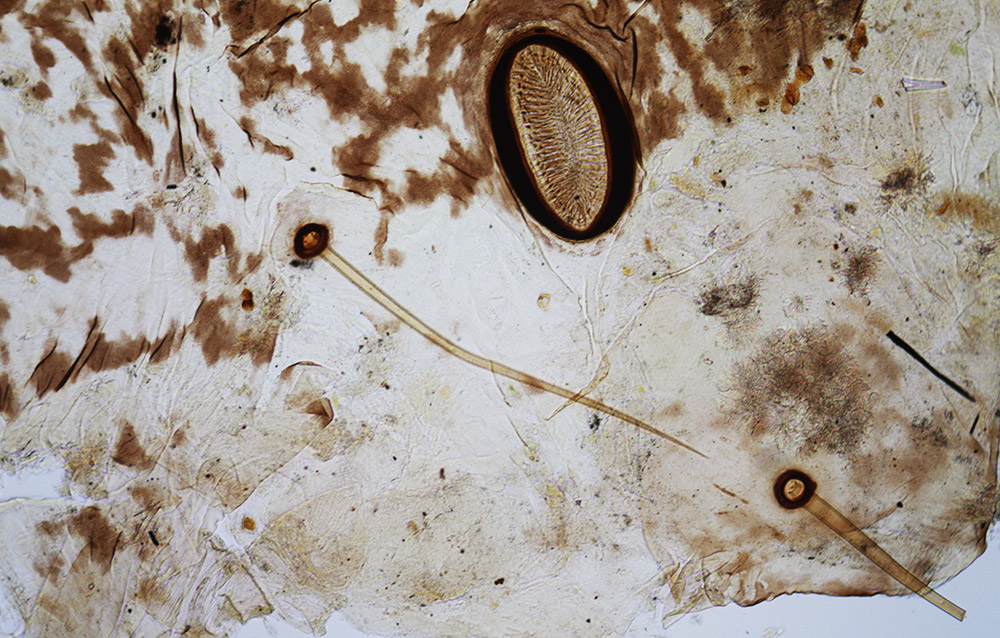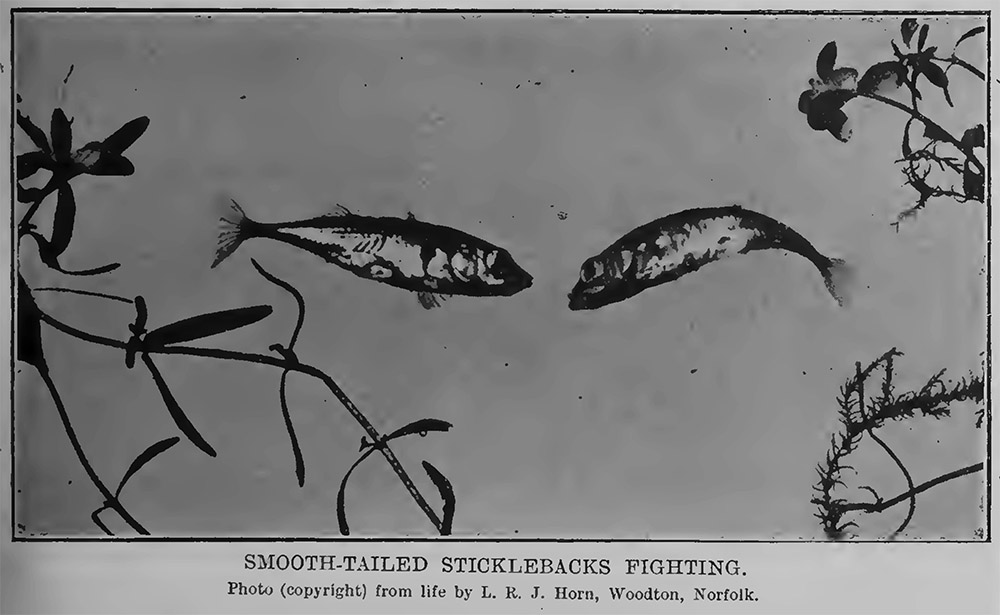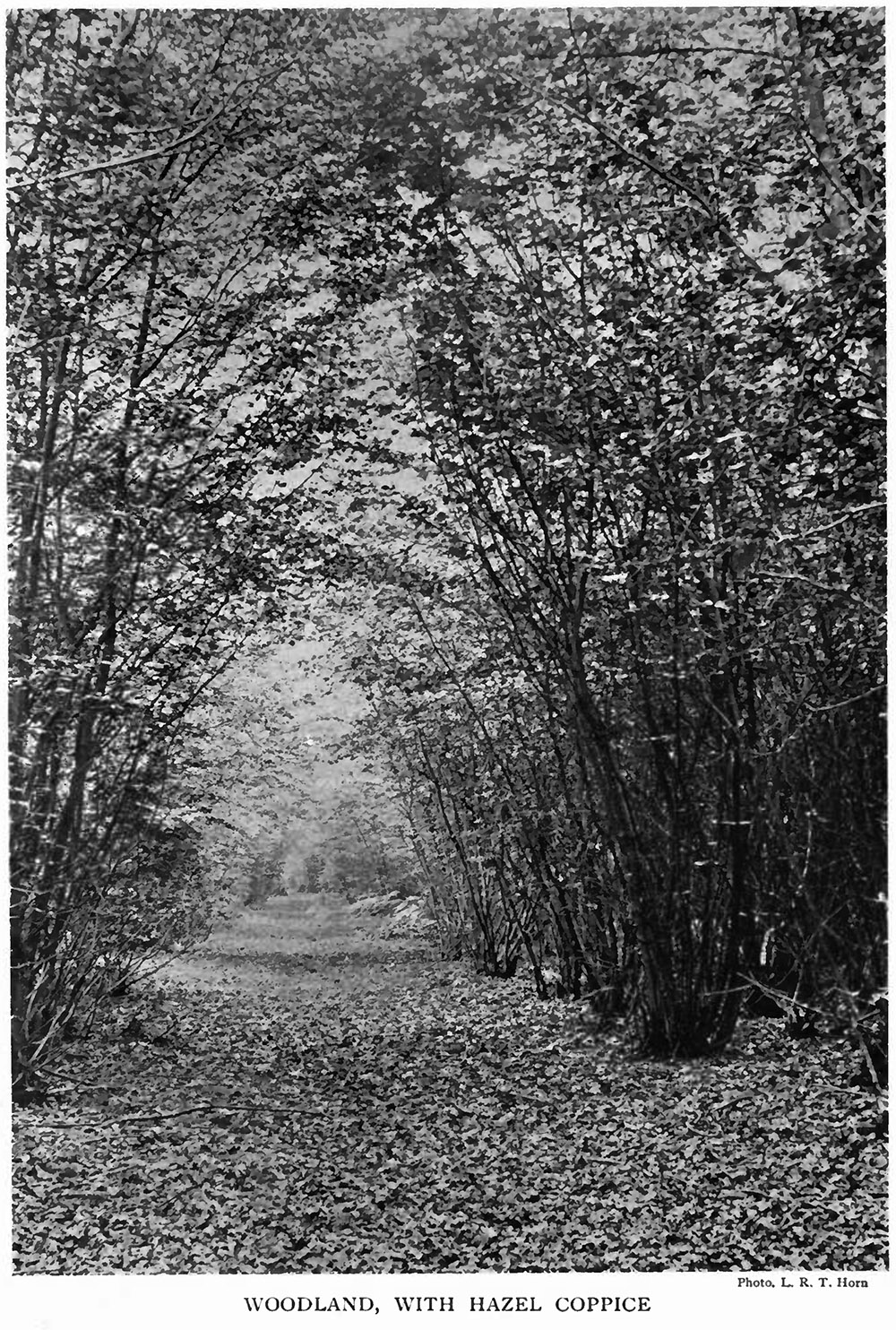
Figure 1. ca. 1900 microscope slide by Lawrence Horn.
Lawrence Robert James Horn, 1879 - 1961
by Brian Stevenson
last updated October, 2019
L.R.J. Horn’s well-made microscope slides bear striking, printed labels (Figures 1 and 2). Horn developed an interest in microscopy, biology, and other sciences at an early age - by the age of twenty, he was offering to exchange his slides with other microscopists (Figure 3). That 1900 offer is the only identified, dated record of Horn’s microscope work, although it is reasonable to assume that he continued to use his microscope and mount specimens for some time afterward. Horn made his living in biology-oriented fields: through the 1910’s he was a professional nature photographer, and in 1939 he was recorded as being a “bacteriologist”.

Figure 1.
ca. 1900 microscope slide by Lawrence Horn.

Figure 2.
Magnified view of Horn’s mount of a caterpillar spiracle (Figure 1). Photographed with a 10x objective lens and C-mounted digital camera.

Figure 3.
L.R.J. Horn offered to exchange some of his microscope slide preparations in December, 1900. From “Science-Gossip”.
Lawrence R.J. Horn was born on December 3, 1879, in Rochdale, Lancashire, England. His father, James was a Baptist minister. Lawrence was the fourth child, and second son.
As evidenced by his 1900 offer to exchange microscope slides, Horn was already an accomplished microscopist by the age of twenty. The address on the exchange offer, Selbourne Villa, Clayton, Yorkshire, was his parents’ home. Although the national census was conducted in March, 1901, Lawrence Horn has not been identified in the records, so his occupation at the time is not known. He was not home with his parents and siblings that evening. His soon-to-be bride, Sarah Brown, was a teacher in Scarborough, some 80 miles away, but he was not with her, either.
Lawrence and Sarah married in the spring of 1901, and moved soon thereafter to Woodton, Norfolk. Horn appears to have been involved with the Norfolk and Norwich Naturalists’ Society, as he was credited by that organization as having collected the area’s first specimen of Dictydiaethalium plumbeum (a slime mold).
The 1911 census recorded that Lawrence worked as a “scientific photographer”. His professional photographs were regularly published in magazines by 1910 (Figure 4). Horn supplied photographs for several of Arthur Horwood’s botany books, which were published through the 1910s (e.g. Figure 5). In 1916, The School World published an article on lantern slides for the school room, which included, “In addition to the lantern-slide manufacturers mentioned, the following list of firms of photographers who prepare slides for sale may be of service: … L. R. J. Horn, Woodton, near Bungay (nature and scientific)”
A registry of U.K. inhabitants was conducted in 1939, at the outbreak of World War 2. Lawrence and Sarah then lived in Sheringham, Norfolk. He was a “bacteriologist”, and she was a “schoolmistress retired”. L.H.J. Horn died on December 6, 1961, just past his 81st birthday.

Figure 4.
“Smooth-tailed sticklebacks fighting”, by L.R.J. Horn. Published in “The Fishing Gazette”, 1910.

Figure 5.
“Woodland, with hazel coppice”, photograph by L.R.J. Horn. From “A New British Flora: British Wild Flowers in Their Natural Haunts”, Volume 3, by Arthur R. Horwood, 1919.
Resources
Burrell, W.H. (1910) A supplementary list of Norfolk mosses, liverworts and mycetozoa, Transactions of the Norfolk and Norwich Naturalists' Society, pages 99-107
England census and other records, accessed through ancestry.com
The Fishing Gazette (1910) About the stickleback, Vol. 61, pages 73-75
Horwood, Arthur R. (1914) Practical Field Botany, C. Griffin & Co., London
Horwood, Arthur R. (1915) The Story of Plant Life in the British Isles, Vol. 3, J. & S. Churchill, London
Horwood, Arthur R. (1919) A New British Flora: British Wild Flowers in Their Natural Haunts, Vol. 3, Gresham, London
Rydall, George H. (1916) A school lantern-slide collection, The School World, Vol. 18, pages 126-128
Science-Gossip (1900) Exchange offer from L.R.J. Horn, New Series, Vol. 7, page 224